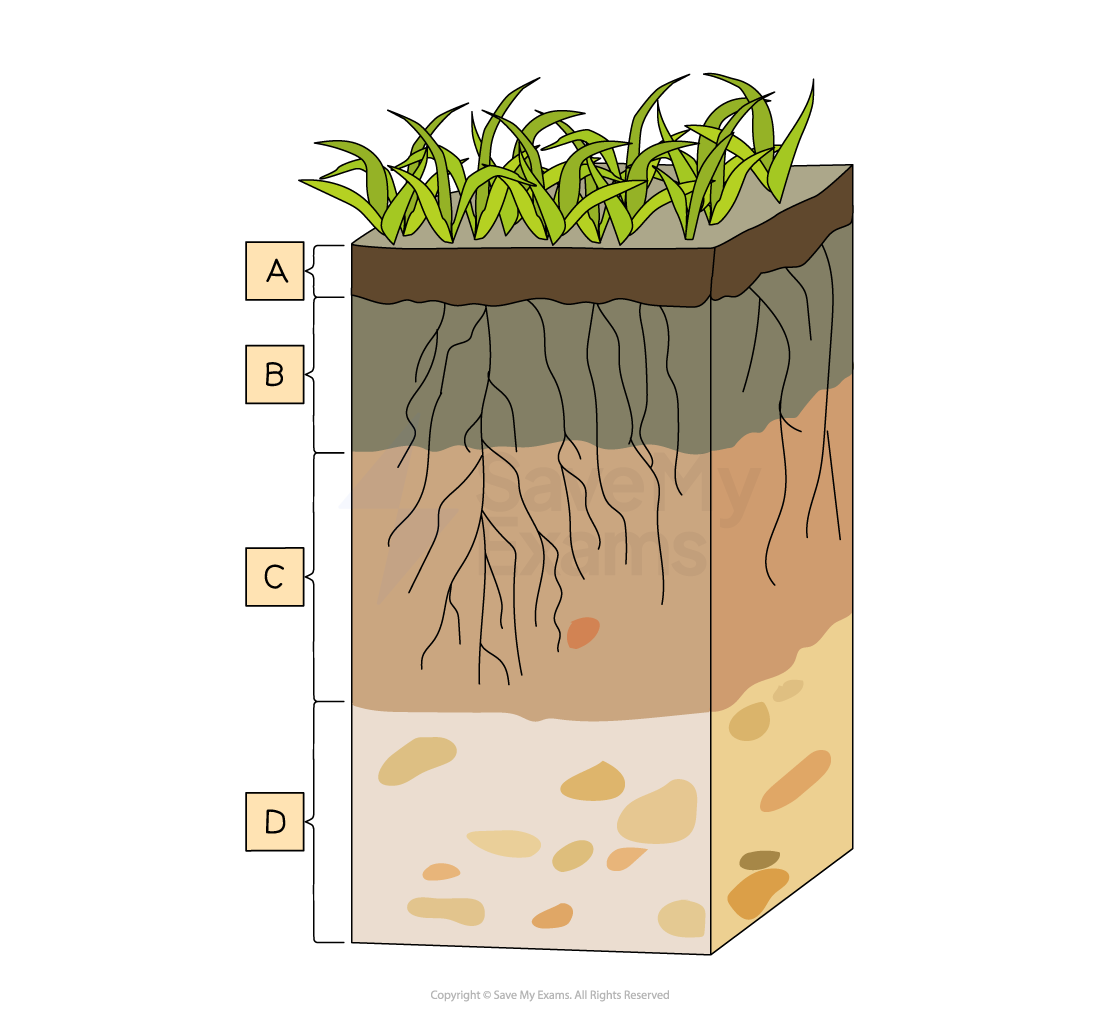Which soil horizon contains the weathered rock that will be broken down to form soil?

A
B
C
D
Did this page help you?
Which soil horizon contains the weathered rock that will be broken down to form soil?

A
B
C
D
Choose your answer
Did this page help you?
Which soil horizon collects minerals like clay, iron, and aluminum that are leached from upper layers?

A
B
C
D
Choose your answer
Did this page help you?
Researchers are designing an experiment to assess the impact of different ground cover types on soil erosion rates in farm fields. Which of the following would be the most appropriate dependent variable for this study?
The type of crops planted in each field
The amount of rainfall each field receives
The slope of each field
The amount of sediment collected in the runoff.
Choose your answer
Did this page help you?
Which of the following methods would be most successful in preventing soil erosion from cropland?
Integrated pest management
Aquaculture
Slash and burn agriculture
Terracing
Choose your answer
Did this page help you?
Students are designing an experiment to determine the impact of logging on steep slopes. They are particularly interested in how erosion from logging will affect the quality of streams in the watershed. Which of the following should they measure to answer their research question?
The turbidity of the streams in the watershed.
The primary productivity of the streams in the watershed.
The number of plant species growing in the euphotic zone of the streams in the watershed.
The pH of the streams in the watershed.
Choose your answer
Did this page help you?
Students are collecting and analyzing soil samples from six different locations in their community. They determined that the first two samples collected were dark in color, contained high levels of nitrogen, and had a high mineral content. The other four samples were light in color with low nitrogen but high levels of Aluminum. Which of the following best explains their results?
The first two samples were collected from the C horizon, which contains weathered parent material, while the other four samples were collected from the A horizon, where nutrients are rapidly depleted.
The first two samples came from areas with high erosion rates, exposing deeper layers, while the other four samples were from undisturbed topsoil with accumulated nutrients.
The first two samples were taken from the A horizon, which is rich in organic matter and nutrients, while the other four samples were taken from the B horizon, which accumulates leached minerals like aluminum.
The first two samples were taken from dry, sandy regions with low organic content, while the other four samples came from areas with high microbial activity and rapid nutrient cycling.
Choose your answer
Did this page help you?
Which of the following correctly describes the different categories of soil horizons?
The O horizon is composed primarily of weathered rock, while the C horizon contains the most organic material.
The A horizon, also known as topsoil, is rich in organic matter, while the B horizon accumulates leached minerals and clay.
The B horizon is the uppermost layer containing decomposing plant material, while the O horizon is where minerals accumulate.
The C horizon contains the most nutrients for plant growth, while the A horizon consists mostly of bedrock.
Choose your answer
Did this page help you?